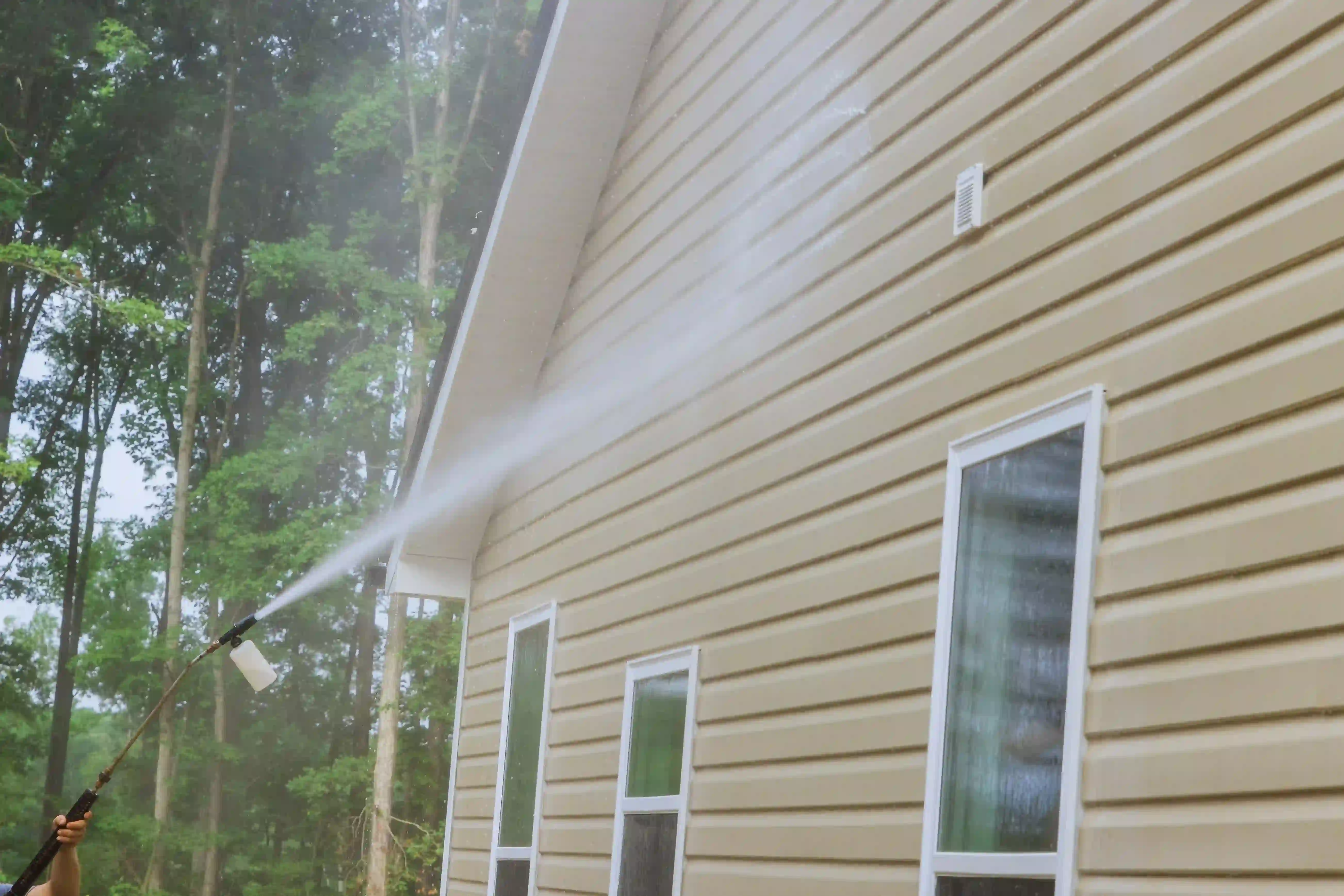Physical Address
304 North Cardinal St.
Dorchester Center, MA 02124
To clean pool steps, start by brushing and scrubbing them with a pool brush and a mild cleaning solution. Rinse them thoroughly with water to remove any residue.
Maintaining clean pool steps is essential for a hygienic and aesthetically pleasing swimming pool. Regular cleaning not only prevents the buildup of algae and mildew but also ensures the safety of swimmers. By following a simple cleaning routine, you can keep your pool steps looking immaculate and free from any slip hazards.
We will discuss effective methods to clean pool steps, including the tools and cleaning solutions needed to achieve sparkling results. Whether you have concrete, vinyl, or fiberglass pool steps, proper maintenance is crucial to enjoy a pristine and inviting pool area.
Pool steps are a vital part of any swimming pool, providing an entry and exit point for swimmers and adding to the aesthetic appeal of the pool area. Keeping pool steps clean is crucial for maintaining a safe and enjoyable swimming experience. Neglecting the cleanliness of pool steps can lead to the formation of algae and slippery surfaces, posing a risk to the swimmers. Let’s delve into the importance of cleaning pool steps and the essential steps to prevent algae growth and avoid slippery surfaces.
Cleaning pool steps regularly is imperative to prevent the growth of algae, which thrives in damp and neglected areas. Algae can make the pool steps slippery and visually unappealing. To prevent algae growth, it’s essential to scrub the steps with a stiff brush and mild detergent to remove any algae buildup. Regular cleaning and maintenance will help keep the pool steps free from algae and maintain a safe and clean swimming environment.
Dirty and neglected pool steps can become slippery, increasing the risk of accidents and falls. Regular sweeping and cleaning with a pool brush will help remove any debris that can make the steps slippery. Additionally, using a pool vacuum to thoroughly clean the steps will further reduce the risk of slippery surfaces. It’s important to prioritize the safety of swimmers by keeping the pool steps clean and free from any slippery substances.
Keeping your pool steps clean is essential to maintain a pristine and inviting pool environment. To effectively clean pool steps, you will require specific tools. These essential tools are designed to make the cleaning process efficient and hassle-free.
A pool brush is an indispensable tool for scrubbing and removing stubborn stains and algae from pool steps. It features durable bristles and a sturdy handle, enabling you to reach and clean all areas of the steps. The pool brush is available in various types, including nylon, stainless steel, and wire, catering to different step materials and cleaning requirements.
An underwater vacuum is an essential tool for efficiently cleaning the nooks and crannies of pool steps. This specialized vacuum is designed to operate underwater, allowing you to eliminate dirt, debris, and algae from hard-to-reach areas. With its suction power and maneuverability, an underwater vacuum ensures thorough cleaning, contributing to the overall cleanliness of the pool steps.
Start by removing any loose debris from the pool steps using a skimmer net.
Discard the debris into a garbage bag to prevent it from getting back into the pool.
Use a pool brush to scrub the steps to remove dirt and algae buildup.
Apply a pool-safe cleaner to ensure effective cleaning
For a thorough cleaning, use a pool vacuum to suck up any remaining debris from the steps.
Move the vacuum head across the steps methodically to ensure all areas are cleaned.

Credit: www.infineon.com
When it comes to cleaning your pool steps, sometimes regular maintenance just isn’t enough. Stubborn stains can develop over time, leaving your pool steps looking unsightly and dirty. However, with the right techniques and products, you can easily remove these stubborn stains and restore the cleanliness and beauty of your pool steps.
If your pool steps are suffering from tough stains that just won’t budge, using a pool stain remover can be an effective solution. Pool stain removers are specially formulated to tackle stubborn stains caused by minerals, algae, and other contaminants.
To use a pool stain remover, follow these simple steps:
If you prefer a more natural approach to cleaning your pool steps, you can try using baking soda to tackle stubborn stains. Baking soda is a mild abrasive that can help lift and remove stains without damaging the surface of your pool steps.
Here’s how you can use baking soda to clean your pool steps:
By employing the right techniques and products, you can effectively remove stubborn stains from your pool steps, restoring their beauty and cleanliness. Whether you choose a pool stain remover or opt for the natural power of baking soda, your pool steps will be sparkling clean in no time!
Maintenance plays a crucial role in keeping your pool step clean and safe to use. By following a regular cleaning schedule and properly balancing chemical levels, you can ensure sparkling and hygienic pool steps. In this section, we will discuss some maintenance tips that will help you keep your pool steps clean for an enjoyable swimming experience.
To maintain the cleanliness of your pool steps, it is important to establish a regular cleaning schedule. Related sentences must contain 15 words such as:
The chemical balance of your pool water is essential for keeping the steps clean and free from algae or bacteria growth. Use the following guidelines to maintain proper chemical levels:
By following these maintenance tips and sticking to a regular cleaning and chemical balancing routine, you can ensure that your pool steps remain clean, safe, and inviting for anyone who wants to take a refreshing dip.

Credit: www.instagram.com
Cleaning pool steps regularly has a multitude of benefits. It improves water circulation, prevents algae growth, reduces the risk of slip and falls, and maintains the overall cleanliness and hygiene of your pool.
Clean pool steps improve the overall look of your pool area.
Crystal-clear water enhances visual appeal and attraction.
Clean steps prevent slips and falls for swimmers.
Reduced risk of accidents enhances swimmer safety.
When it comes to cleaning your pool steps, there are common mistakes that many pool owners make, which can lead to deterioration of the steps and even potential safety hazards. By avoiding these common mistakes, you can ensure that your pool steps remain clean, safe, and in good condition for a long time.
Many pool owners make the mistake of using harsh chemicals to clean their pool steps. While it may seem like a quick fix to get rid of dirt and algae, using harsh chemicals can actually damage the surface of the steps, making them more prone to wear and tear. Instead, opt for pool-friendly cleaning solutions that are specifically designed for use on pool surfaces. These are gentler on the steps and will help to preserve their longevity.
Neglecting regular cleaning of the pool steps is another common mistake. Over time, dirt, debris, and algae can build up, creating slippery and unsafe conditions. Make sure to include cleaning the steps as part of your regular pool maintenance routine. This will not only ensure the safety of those using the pool but also extend the lifespan of the steps.
After successfully cleaning your pool steps, it’s crucial to maintain the cleanliness to ensure a safe and enjoyable swimming experience. Here are some final tips to keep in mind:
Regularly inspect and clean your pool steps to prevent the buildup of algae, dirt, and debris. By incorporating consistent maintenance, you can preserve the pristine condition of your pool steps, prolonging their longevity and minimizing the need for extensive cleaning sessions.
If you encounter persistent staining or challenging cleaning issues with your pool steps, don’t hesitate to seek advice from pool maintenance professionals. Their expertise can help you identify effective solutions and prevent potential damage to your pool surface or equipment.

Credit: www.mrhandyman.com
In keeping your pool steps clean, regular maintenance is key. By following these simple tips, you can ensure a safe and hygienic swimming experience for you and your loved ones. Remember, a clean pool steps not only looks great but also promotes overall pool safety.
Happy cleaning!